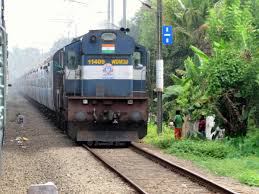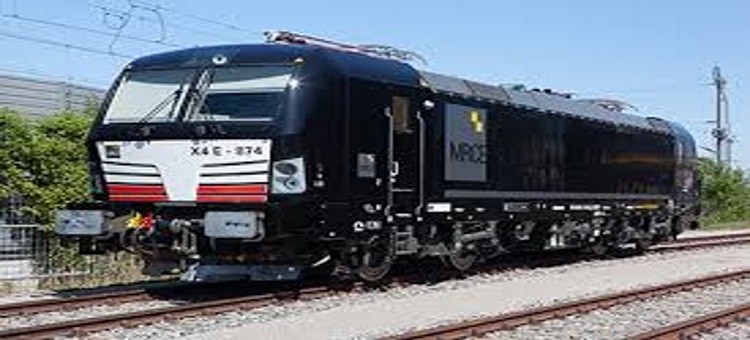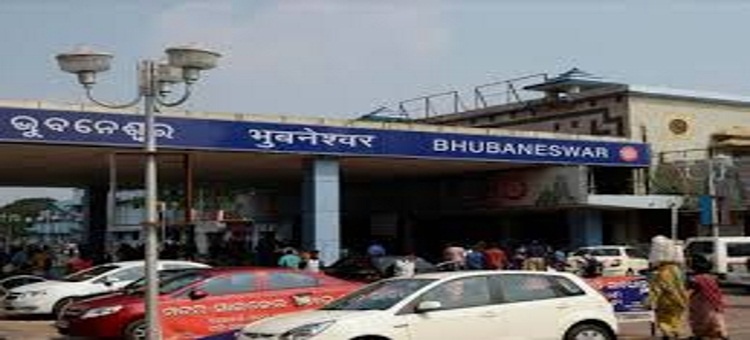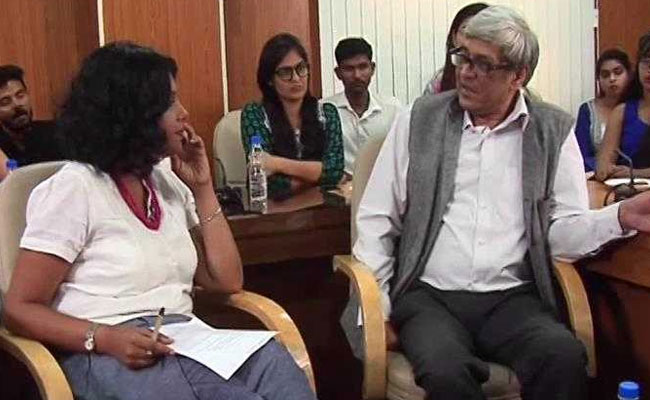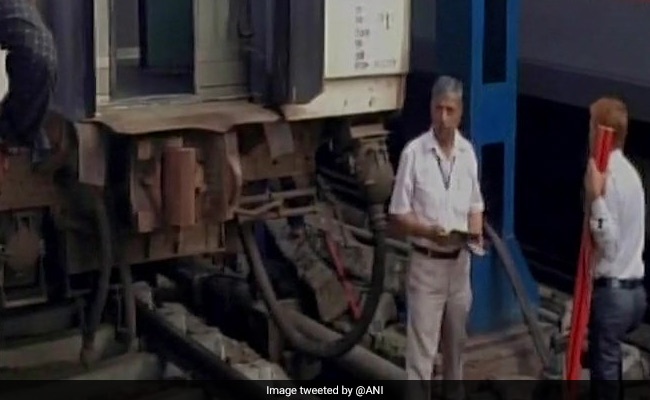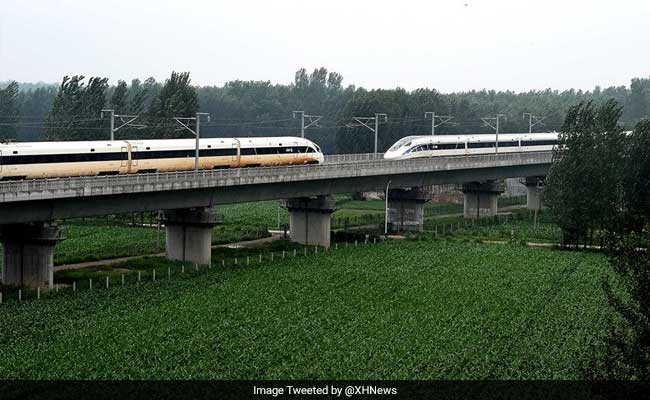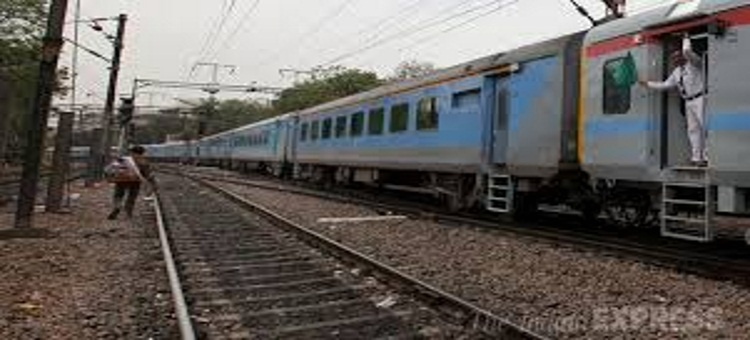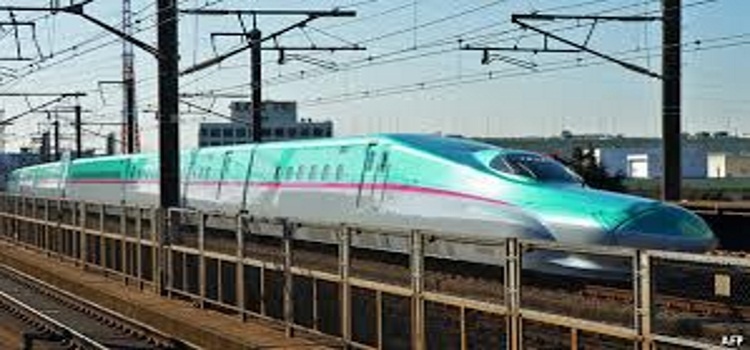
When Prime Minister Narendra Modi and his Japanese counterpart Shinzo Abe laid down the ceremonial first stone of India’s first high-speed rail line at the Athletic Stadium near the Sabarmati Railway Station in Gujarat, it showcased India’s entry from the smoke-billowing ‘chhuk-chhuk’ train, started under the British Raj some 164 years ago, to the league of those nations equipped with a high-speed ultra-modern rail network. Not only that, it is a back-to-back answer to China’s Belt and Road Initiative. A bullet train on Indian soil, under the government’s ambitious plan to modernise rail infrastructure after decades of underinvestment, is a proud moment as it indicates that Indian Railways would be obtaining the most modern technologies matching that of the developed countries.
EFFICIENT, FAST, ACCIDENT-FREE
The ultra-efficient Shinkansen train network connects cities along the length and breadth of the country. Till 2011, it also had the highest ridership annually before giving up the title to its rival China.
The trains, which run every three minute, attain the maximum speed of 320km. They are operated by companies of the Japanese Railways Group and are known for their punctuality and safety record. Sample this: crew members of the Shinkansen trains are asked to give an explanation if the train arrives a minute late to its destination.
The network boasts of zero accident fatalities in its 53-year-journey, although Japan is prone to natural disasters like earthquakes. A Google search about Shinkansen accidents streams an incident of self immolation in the train and a minor derailment due to earthquake.
The system has become synonymous with efficiency. A video on YouTube titled ‘The 7-Minute Miracle Of Japanese Train System’ was shared widely on social media websites. The clip showed crew members respectfully bowing as a Shinkansen entering the station, waiting for passengers to disembark and swiftly cleaning every car of the super speed train in seven minutes.
COSTLY, BUT ENVIRONMENT-FRIENDLY
An undated report of the Japan Railway & Transport Review said the Shinkansen project has tried to minimise noise pollution because it passes through high population density areas. Compared to other means of transport, the Shinkansen hardly emits any carbon dioxide, Nitrogen Oxide and other harmful gases. “If the Tokaido Shinkansen had not been constructed, about 15,000 tons more CO2 would have been emitted in 1985. This corresponds to the annual amount of CO2 emitted by industry in and around Tokyo,” it read.
The fares for Shinkansen were, however, costly. Former member of the railway board, RC Acharya, wrote in an article for HT in 2015 that a Shinkansen trip from Tokyo to Kyoto (514 km) costs Rs 7,700. It isn’t surprising too that the estimate fares for the proposed Ahmedabad-Mumbai bullet train is estimated to range between Rs.3,000 – Rs.5,000.
This new High-Speed Rail (HSR) line which would run between Mumbai and Ahmedabad, cutting the travel time down from eight hours to two or three hours for a 508-kilometers’distance is aimed to become a part of ceremonies commemorating the 75th anniversary of India’s Independence, its scheduled completion date has been moved up by one year to August 15, 2022. The total cost of this project had been approximated at 17 billion USD, of which Japan would provide a friendly loan for over 80 per cent of the value.
The Japanese government would charge interest at 0.1 per cent, over a 50-year repayment cycle along with a grace period of 15 years. Japan would also provide the HSR technology making India a potential developer of it. With an aim to unleash the unexploited potential of Asia’s two largest democracies, India and Japan had formed a ‘special strategic and global partnership’ in 2011. And, incidentally this Mumbai–Ahmedabad Shinkansen line has come within months after the announcement of the Asia-Africa Growth Corridor, which is a joint effort by both Japan and India to strengthen transportation infrastructure and development across Asia and Africa.
As China and Japan are the global giants competing for contracts to build new HSR lines and supply the rolling stock all over Asia and even in Europe, Beijing may also be eyeing the other two HSR projects in India waiting in the wings, including the proposals to construct HSR lines from Delhi to Nagpur and Delhi to Chennai. However, another reason for preferring Japan over China is that Japan does not have a history of accidents on their bullet train network. On the other hand, there remain many unanswered questions regarding the timely completion of the Mumbai–Ahmedabad Shinkansen line project. Maintaining a balance in providing better connectivity while managing costs due to the demands of the land, may escalate to become a big source of worry for the authorities. The government might face a hard time explaining even the fares – which is expected to be higher than the flight tickets between Mumbai and Ahmedabad.
With train tickets costlier than flight tickets, the Mumbai-Ahmedabad bullet train project would have to cater to at least 1.5 crore passengers a year to earn enough and repay the loans with interest on time. Acquiring 825 hectares of land for this project would be the toughest task as it covers more than 163 villages in eight districts of Gujarat and 44 villages in three districts of Maharashtra, affecting as many as 2,761 families. Besides, the safety issues for bullet trains will also be a matter of concern as it would be running at 320 kmph. Not to forget, Narendra Modi is a Prime Minister who is gradually gaining accolades for his particular brand of big stick politics – aimed to push his country into a full rebuild. Asserting that India is willing to jump on the ride to see where it goes, he said that this ambitious project would bring pace to development in the country and no country can grow if they don’t dream big. “It is a new India which has to fly high. To grow one needs to expand his dreams and decide his strengths that would be required to achieve that,” the Prime Minister said in his address at Sabarmati Ashram.
Only time can spell out the success of the much-hyped Mumbai-Ahmedabad bullet train project, but right now, it seems that India is aiming to become a high-speed rail powerhouse, resulting in a proper upgradation of its 164-year-old conventional transportation system on the tracks. And, the Mumbai-Ahmedabad line is the first step towards this ambition.
How the Railway systems around the world raced to get their fastest trains
The quest for the fastest possible rail network had been on the agenda of countries across the world throughout the twentieth century. The concept of high speed train is used to designate any railway system that has a speed above 250 kph. While European countries like Germany and Italy had been researching and experimenting on high speed rail network since as early as the beginning of the twentieth century, it was Japan which made the breakthrough in this race for the fastest rail technology.
Japan’s headway in high speed rail technology was soon followed by France, Germany, Spain United Kingdom, United States, China, Italy, Korea and Taiwan. “This transformation of ground transportation infrastructure has become the symbol of modernity in many countries, and, from the financial perspective, high speed rail lines have become the most important projects in those countries where this innovation has been implemented,” write economists Daniel Albalate and Germa Bel in their work on the economics and politics of high speed railways.
While the government of these countries have often justified the technology in terms of commercial gains to be made and environmental benefits, they have also come under criticism regarding the economic and social burden the fast train projects might lead to. Whatever be the highs and lows of high speed rail technology, its association with modernity has made the idea of ‘fast trains’ a near necessity for any country desiring to be labeled as ‘developed’.
On Thursday, as Prime Minister Narendra Modi, along with his Japanese counterpart Shinzo Abe, inaugurated the first high speed rail service in India, or what is popularly called the bullet train, the Indian rail industry took a leap in the direction of modern locomotives. Here is a look at few other countries who have been ahead in this race.
JAPAN
In the period following the end of the Second World War, Japan made several astounding economic gains as it benefited from Cold War politics. A product of this economic boom and the necessity of the post-war demographic situation in Japan led the country to discover high speed locomotive technology. Subsequently, the country made a breakthrough in high speed railways in 1964 with the Shinkansen or the bullet train network. At its inception, the network extended from Tokyo to Osaka. Over time it has extended to cover 2,764.6 km, linking most of the major cities in the country.
The bullet train technology inaugurated by India and Japan in Ahmedabad on Thursday rests on the same technology that made Japan the first country to successfully introduce high speed railways.
UNITED KINGDOM
On January 10, 2012, the Secretary of Transportation of the British government announced the building of a high-speed railway line between London and Birmingham, with an extension to Manchester and Leeds. Despite criticism against the project regarding the high costs it would accrue, the British government maintained that the benefits to be gained from the rail network would be much higher than the costs. The project has come under strong criticism from organisations like the Institute of Economic Affairs and the Adam Smith Institute. The media too has been critical of the project. In 2011 an article on the high speed rail project published in the weekly publication, The Economist, came out with the title “The great train robbery”.
The British government, however, had been consistent in their confidence on the project. A report on the rail network presented by the government to the Parliament stated that “the Government believes strongly that the time has come to act with the same boldness as our Victorian predecessors”.
UNITED STATES
While research and tests for high speed rail in the United States had been ongoing since the early decades of the 20th century, one of the first substantial projects date back to the High Speed Ground Transportation Act of 1965. Despite being one of the first countries to introduce high speed rail networks, it could barely spread with the same agility. A more recent development in the process has been the Intermodal Surface Transportation Efficiency Act in 1991. The Act mandated the Federal Railroad Administration to identify five corridors for high speed rail network. Over time the number of such corridors identified have increased.
In April 2009, the Obama administration presented a blueprint for a national network of high speed passenger rail lines. “The purpose of the plan, as the president stated is to reduce traffic congestion, cut dependence on foreign oil, and foster livable urban and rural communities,” wrote Albalate and Bel. While the cost of the network has come under heavy criticism, a major point in support of the railways made by the government is that of environmental benefits to be made, particularly those related to energy efficiency and cutting down of air pollution.
EUROPEAN UNION
The first high speed rail line arrived in Europe in 1981 with the Train Grande Vitesse line between Paris and Lyon. The process of opening high speed rails in Europe accelerated in the late 1980s with lines opening in Germany and Spain and later in Italy. The development of high speed rail network in European countries depended on a variety of factors including the specific socio-economic and territorial needs of the states, the condition of the rail companies and the strategies adopted by the individual governments.
While high speed rail network developed at a fast pace in almost all European countries, the French and the German models gained an upper hand over all others. Developed in the 1980s and 90s, the two models became a source of inspiration for most other European countries who wished to develop fast trains strategy, this was particularly the case for Italy and Spain.
In the early 1990s, the European Union launched an ambitious plan for an integrated European high-speed network. One of the first steps taken by the Union in the process of railway reorganisation was the liberalisation of the rail economy. As of 1994, nine projects were selected for building high speed rail lines. With the enlargement of the European Union, however, the number of projects also increased over time.

